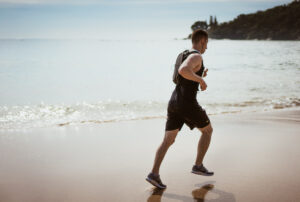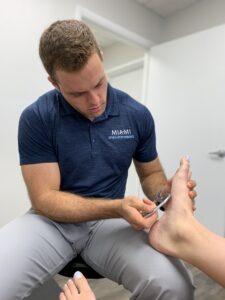Runner’s Injury Prevention Guide
Strategies to stay injury-free and maximize performance
Running is one of the most popular forms of exercise in the world and an excellent way to improve cardiovascular health. Unfortunately, however, a large percentage of those who engage in running end up with some sort of injury during training that either temporarily prevents them from training or causes them to switch to another modality. Below we are going to share some of the mechanisms as well as common treatments for running injuries.
What are some of the stressors placed on Runner’s bodies?
Many of the injuries sustained by running are due to inadequate shock absorption. Particularly for long-distance running, the repetitive steps can take a large toll on the lower extremity and back if the technique and biomechanics are not efficient. On average, a long-distance runner will contact the ground 10,000 times per hour with the force of 5-10x bodyweight being absorbed per foot-strike. This accumulation of force through the body is what results in nearly a 90% injury rate amongst marathon runners.
How does the body absorb forces from running?
The human body is a biomechanical and structural marvel that is able to produce dissipate a tremendous amount of force when working optimally. When you run, ideally you are able to spread the force of each strep across the bottom of the foot, up through both legs into the pelvis and evenly throughout the spine. This structural skeleton is supported by an intricate network of muscle, fascia, ligament, and tendons that allow for “tensegrity” amongst these structures. Tensegrity is defined as “the characteristic property of a stable three-dimensional structure consisting of members under tension that are contiguous and members under compression that are not.”
How does the body’s natural structure become disrupted?
The Tensegrity model and running efficiency are dependent upon equal distribution of force across a large number of joints. If a joint becomes fixated, it is no longer able to participate in the force distribution and will cause other joints to take on an excessive amount of compression. For example, the foot is made up of 26 bones and 33 joints, and if some of these joints become fixated while others become hypermobile, this can lead to inflammation in the foot and conditions such as plantar fasciitis and bunions.
Additionally, muscles can become overactive as well as leading to conditions such as shin splints, and calf strains. There are over 100 muscles in the foot that are responsible for stability and subtle movements if these muscles are not properly trained in their respective function, larger muscles such as the gastrocnemius and tibialis anterior will try and act as stabilizers and ultimately become overworked, leading to a cumulative injury cycle.
How can these issues be prevented to reduce the likelihood of further injury?
At our clinic, we use a three-part model to work with runners and design an individualized program to resolve any existing injuries, ensure that you remain injury-free and improve long-term running performance. These treatments include chiropractic adjustments, soft tissue therapy, and corrective exercise.
How do chiropractic adjustments benefit runners?
Chiropractic adjustments to the proper joints are able to restore joint biomechanics in the body and allow efficient movement and force dissipation across all joints. Our chiropractic physicians at Miami Spine and Performance are not only trained in treating joints of the spine but also of the extremities including the hip, ankle, and foot. Regular adjustments of the foot and ankle can be very beneficial for those who are running frequently or are dealing with any running-related injuries.
How does soft tissue therapy benefit runners?
Soft Tissue therapy, particularly active release technique and dry needling are great hands-on modalities for runners to take advantage of when seeing their chiropractor. Active Release has numerous specific protocols for reducing muscle adhesion and soreness in muscles that are typically overworked in runners. Dry Needling can have a very profound impact on muscle tightness in the muscles of the calf, shin, and foot. Complimenting regular chiropractic adjustments with these soft tissue modalities is a great way to resolve existing injuries or prevent future running-related injuries.
How do corrective exercise benefit runners?
When we design a customized corrective exercise program for our runners, we focus primarily on three areas
- Foot and Ankle Control
- Hip Strengthening
- Core Stability
Because running is done by repeatedly striking your feet to the surface you are running on, it is imperative that we emphasize proper foot biomechanics when working with runners. A few of the pre-requisites for elite, efficient running include intrinsic foot control, functional ankle mobility, proper landing mechanics and single-leg stability.
Intrinsic foot control involves using the small muscles to stabilize the foot while running and properly distribute force throughout the foot and ankle.
Functional Ankle Mobility does not only increase the range of motion of the ankle, but also being able to control that range of motion. This allows for efficient muscle activation around the ankle as well as can prevent injuries such as ankle sprains.
Proper Landing Mechanics is crucial for ensuring that the body is able to distribute force efficiently with each step. By working on landing mechanics, through plyometric training, you are able to train the foot, ankle, knee, and hip to work together to buffer force when the body lands or steps.
Single leg Stability improves balance, coordination and muscle stabilizer activation. By regularly training your ability to balance on one leg, you are able to activate appropriate musculature to efficient stability as well as sync your vestibular (balance) system with your musculoskeletal system.
Just as strengthening the muscles of your foot is important for proper force distribution upstreams, strengthening your hips, and primarily the hip rotators (glute medius, piriformis, gemellus muscles, etc) can have a significant impact on the way that force is distributed in your body downstream when running. If you are not able to use your hip rotators in their stability function when running, you can have issues downstream such as knee valgus that can lead to knee injuries and inefficient running.
In our clinic, we focus on hip strengthening through Controlled Articular Rotations (CARs), Sidelying variations and standing variations.
Controlled Articular Rotations are used to improve the functional mobility of the hip through a full range of motion, allowing for good control of the hip joint itself.
Sidelying Hip-Strengthening Variations such as hip bridges and clamshells allow us to strengthen the hip rotators through a closed chain and allow us to improve hip centration within the joint.
Standing Hip Variations such as single-leg RDLs and banded marches allow us to strengthen the hip while standing in order to have the most sport-specific carry over to running.
The foundation of any efficient movement in sport starts with core stability and particularly respiration. Running is an externally linear sport but internal during the run our body is buffering movement in the sagittal (forward and backward), frontal (side to side) and transverse plane (rotation). This is why we focus our core training for runners into these three groups.
Proper Respiration
Anti-Extension such as plank and roll-out variations.
Anti-Rotation such as Pallof presses and single-arm rows.
Anti-Lateral Flexion such as Farmers walks and Suitcase carries.
Most Common Running Related Conditions we manage at our Clinic
- Plantar Fasciitis
- Achilles Tendinitis
- Hallux Rigidus
- Bunions
- Shin Splints
- Runners Knee
- Patellar Tendinitis
- Hamstring Strain
- Adductor Injuries
- Iliotibial Band Syndrome
- Stress Fractures
If you are a recreational or competitive runner and looking for a chiropractor that knows running performance and biomechanics, give us a call, we’d love to help you!



